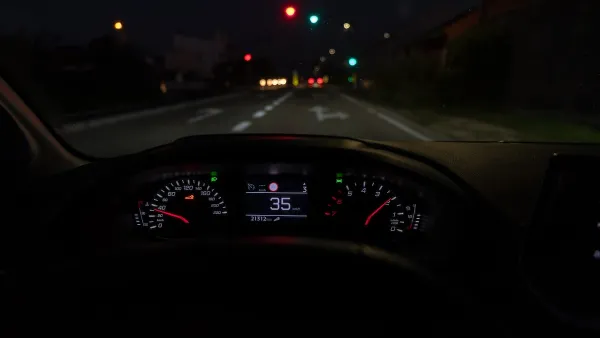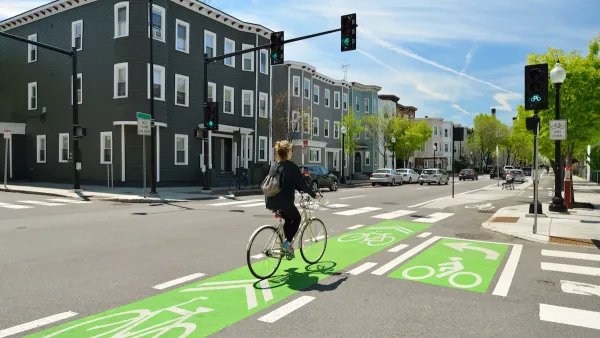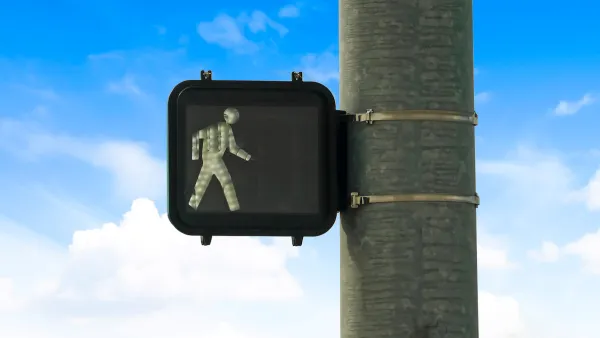The rise in cyclist and pedestrian deaths in the United States points to preventable failures in road design and regulations.

Americans are routinely taught to treat traffic crashes and automobile-related deaths as tragic, but sometimes unavoidable, “accidents,” writes Farhad Manjoo. “But as the journalist Jessie Singer has argued, in much of American life, many ‘accidents’ are far from accidental — they are instead the inevitable result of political and economic choices that society has made, and they might have been prevented had we made other, safer choices.”
Manjoo points to simple ways to improve safety for bike riders being implemented in other countries: “protected bike lanes, which offer a physical barrier between cars and bicycles; raised areas at corners behind which bikes could safely queue while waiting for the light to change; a “setback” that forces cars to wait farther back from the intersection, improving their ability to see pedestrians and bikers, and separate signals for bikes and cars, to help each kind of vehicle stay out of the other’s way.”
In a “major reversal” of prior trends, writes Manjoo, “American roads have grown especially dangerous to ‘nonoccupants’ of vehicles — that is, bicyclists and pedestrians. In 2011, 16 percent of traffic deaths were of nonoccupants; in 2020 it was 20 percent.”
Manjoo argues that to improve safety for all road users, we need a fundamental shift in how we approach urban design, transportation planning, and the regulation of vehicles. “We have to make cars smaller, because S.U.V.s are significantly more deadly to pedestrians than sedans. We have to slow them down, because speed kills. And we have to be willing to slightly inconvenience drivers to improve the roads for everyone else.”
FULL STORY: Riding a Bike in America Should Not Be This Dangerous

Analysis: Cybertruck Fatality Rate Far Exceeds That of Ford Pinto
The Tesla Cybertruck was recalled seven times last year.

National Parks Layoffs Will Cause Communities to Lose Billions
Thousands of essential park workers were laid off this week, just before the busy spring break season.

Retro-silient?: America’s First “Eco-burb,” The Woodlands Turns 50
A master-planned community north of Houston offers lessons on green infrastructure and resilient design, but falls short of its founder’s lofty affordability and walkability goals.

Test News Post 1
This is a summary

Analysis: Cybertruck Fatality Rate Far Exceeds That of Ford Pinto
The Tesla Cybertruck was recalled seven times last year.

Test News Headline 46
Test for the image on the front page.
Urban Design for Planners 1: Software Tools
This six-course series explores essential urban design concepts using open source software and equips planners with the tools they need to participate fully in the urban design process.
Planning for Universal Design
Learn the tools for implementing Universal Design in planning regulations.
EMC Planning Group, Inc.
Planetizen
Planetizen
Mpact (formerly Rail~Volution)
Great Falls Development Authority, Inc.
HUDs Office of Policy Development and Research
NYU Wagner Graduate School of Public Service




























